Today we’re covering a topic we haven’t discussed before on The Spa Dr. podcast—why you should go green. As a naturopathic physician and The Spa Dr, I talk a lot about clean living. And it’s something I cover in my book Clean Skin From Within… how to have a clean body, clean mind, and clean skin. In addition to the health reasons for clean living, there’s another benefit… clean living is also essential for a healthy planet. So, I asked my guest today to talk about this other side of clean living so we can learn how to live greener, more sustainably for the health of our planet for generations to come.
My guest is David Gottfried. David Gottfried is known as the father of the global green building movement. He founded both the U.S. Green Building Council and World Green Building Councils. The GBC movement has likely reduced global warming and ecological footprint more than any other organizations in the world. David serves as the CEO of Regen360 which helps accelerate commerce and adoption of advanced greentech products and methodologies for leading global organizations, including Dreamworks, Starbucks, Genentech, Apple, Stanford University, and the State of California.
Reset360 also formulates and distributes hormone-balancing and anti-aging books, courses and products. The company’s products are guided by Dr. Sara Gottfried MD, a New York Times bestselling author. David has received numerous leadership awards, including being inducted into the Green Industry Hall of Fame, and he is author of the award winning bestseller Explosion Green. He lives in Berkeley California with his wife Sara and their two daughters.
In today’s interview, David shares why it’s so important to make changes today in your home and how you can start those changes right away to support a greener lifestyle today to protect the health of your family and planet for generations to come.
So please enjoy this interview.
If you have not done so already, I highly recommend that you get your customized skin profile here. It’s free and based upon your answers, it will give you great tips for glowing skin and vibrant health. Also don’t miss out on all of the latest tips to get glowing skin and vibrant health, be sure to follow me on Facebook, Pinterest and Twitter. And join the conversation!
Thank you, and we’ll see you next time on The Spa Dr. Podcast.
TRANSCRIPTION
Trevor: Hi, there. I’m Dr. Trevor Cates. Welcome to The Spa Dr. Podcast. Today, we’re covering a topic we haven’t discussed before on The Spa Dr. Podcast. As a naturopathic physician and The Spa Dr., I talk a lot about clean living, and it’s something I cover in my book, Clean Skin From Within, how to have a clean body, clean mind, clean skin. In addition to the health reasons for clean living, there’s another benefit. Clean living is also essential for a healthy planet.
I asked my guest today to talk about this other side of clean living, so we can learn how to live greener, more sustainably, for the health of our planet for generations to come. My guest today is David Gottfried. He is known as the father of the global green building movement. He founded both the U.S. Green Building Council and the World Green Building Councils. The GBC movement has likely reduced global warming and the ecological footprint more than any other organizations in the world. David serves as the CEO of Regen360, which helps accelerate commerce and adoption of advanced green tech products and methods for leading global organizations, including DreamWorks, Starbucks, Apple, Stanford University, and the state of California.
David’s newest invention is Build Move, a three-day, life-changing summit for visionaries who aspire to build their own movement and lasting legacy. David also serves as the CEO of Reset360, which formulates and distributes hormone-balancing and anti-aging books, courses, and products. The company’s products are guided by Dr. Sara Gottfried, M.D. and New York Times best-selling author. David has received numerous leadership awards, including being inducted into The Green Industry Hall of Fame, and he is author of the award-winning best seller Explosion Green. He lives in Berkeley, California with his wife, Sara Gottfried, and their two daughters.
In today’s interview, David shares why it’s so important to make changes today in your home and how you can start those changes right away to support a greener lifestyle today to protect the health of your family and our planet for generations to come. Please enjoy this interview.
David, it’s so great to have you on my show.
David: Oh, it’s great to be here. I’m so excited for this discussion.
Trevor: Yeah, absolutely. I talk with people a lot about clean living and how the choices that we make in our homes and our personal care products, those sorts of things, they impact our health. You talk with people a lot about how a lot of the same things in people’s homes also play a role in the health of the environment. Let’s talk about how people can green their homes and make better choices, both for their health and for the environment.
David: Sounds great. Let’s dive in.
Trevor: Okay. Tell me how you got started in all of this.
David: Well, I’m a systems engineer from Stanford, and I’m really a nerd. When I saw Revenge of the Nerds, I felt at home. As a systems engineer, if something’s broken, you start problem solving, and you want to fix it. I also studied civil engineering and fell in love with solar and that there is a sun. Actually, the sun can fix so many things, including the energy crisis, and it’s obviously renewable through solar, but we need sun to grow things. We have the plants with photosynthesis.
From solar, I ended up into green building. My first career was as a real estate developer in Washington D.C., non-green, and then I wanted to apply what I had learned at school to the building industry, which I fell in love with development and merged the two together. That got me into green building right at the beginning of the revolution in the U.S. in about 1991.
Trevor: Okay. Great. What is it that makes you so passionate about this? What are your concerns about the building practices that are so common today, and what made you want to really dive into this and share this with other people?
David: Engineers hate waste, and when I got into the building industry, there’s so much waste. We tear down buildings that could be renovated. When we build, if you’ve ever seen the big dumpsters outside a home remodel, it’s full of a lot of things that could be recycled, like wood and glass and steel. If you keep studying waste in our homes, in our buildings, in our lives, there’s so many areas of waste.
One huge area of the building industry I call “intellectual waste” because we hire architects and planners and designers to design phenomenal homes, remodels, buildings, but the way we hire them is wrong. We don’t hire them with an environmental ethic. We don’t hire them with real performance KPIs. A performance KPI in the health arena would be that remodel, those new paints, that new furniture, the carpet, the couch don’t make you sick. Those items don’t use excessive energy. Those items, at the end of their first life, can be recycled for a second and third life.
We could use the sun to have net zero regenerative energy. We don’t need the grid. We can capture. It’s pouring out here in the Bay Area right now. Who’s capturing the water, and what are we doing for the water? We have a water crisis in California. Our aquifers are dry, and yet that water hits the pavement, which is black, and during the hot summer days, the heat hits it. It radiates out heat, which then, in hot areas, makes us have air conditioning, and it just runs it into the sewer system, which requires energy to then just shoot the water into the bay. Why not recharge our aquifers?
Trevor: Yeah. I bet that’s really frustrating when you see that kind of thing and you think, “There are answers for this.” Why aren’t people doing it? Why aren’t people making these changes?
David: It really comes down to education. We’re just not that well educated on our real home, which is planet Earth. We don’t have an operating manual that says, “Water’s precious. Sun is sacred. Sun can be harnessed. Landfills are not good. Better to reuse. When you make something, don’t have all these toxic products. When you build out your nursery, do you want all the off-gassing of that paint that has biocides and fungicides?” Wake up.
What are the rules of Earth? First, it starts with the rules of nature. What are the rules of nature? No waste. Don’t take more than you need. Give back to the system and have a closed loop, cradle to cradle. We’re just not educating our kids, ourselves. We’re getting there. The ship is turning, but very slowly. Now our kids are learning more. They know about recycling, but even still, with the internet and all they’re buying stuff every day on the internet, it’s still a packaged economy. I think from kindergarten on we should be educating.
Trevor: Yeah, absolutely. If you could start educating kindergartners or people when they’re kids, where would you start?
David: I would start … kind of what I’m saying. Teach them about nature and that we are part of nature. We, as humans, don’t have to be at war with nature. We need to understand it’s a harmony. If we hurt nature, nature will win, and we lose. It’s not clear if we’re winning or losing right now. We plant in it. Let’s plant, and it grows food. Don’t hurt the soil and make it dirt. Don’t pave it over. When we build our driveway, let’s have little porous holes, because we want to recharge the aquifer. This is what an aquifer is. It’s a big well for our water. When we run out of it, we’re in trouble.
This is glass. It can be recycled. Where does the recycling go? You see this Patagonia jacket? It’s made from plastic bottles. What can you do as a kindergartner? Well, you can recycle. This is a compost. This is the compost thing that you can turn. This is the beautiful soil with worms. Here’s the plant you can grow that we can eat. Guess what? That’s organic. There’s just so much you can teach them in every single thing they do. Let’s walk to go to the Starbucks and have your pink drink. Let’s move our bodies, but let’s calculate the CO2 we just saved.
Trevor: Interesting. Yeah, that would be great for kindergartners to have … actually, all of us to really think about, not just kindergartners. When we think about our homes, where are good places for people to start making changes?
David: In our homes, there are different line items in health of our bodies or food. You’ve got macronutrients. What are the macronutrients in your home, in terms of building nutrients? Well, the flows there are energy. What are the sources of your energy? Well, it’s your gas. Let’s throw water in that, so utilities. That’s second in our home macronutrients. How much water are you using? How many gallons a day? How many gallons per person?
Now, how do you improve energy and water? Energy … We started in green building with the envelope of the home, and if you have a 1915 Craftsman, like we used to have, you probably have no insulation in the walls. You have single pane windows that leak. You might not have insulation in your crawlspace or your attic, so tighten up your envelope. How do you do it? If you have old walls, you can actually drill little holes in it and blow cellulose. That works quite well. Cellulose is just shredded newspaper with a fire retardant, and it’s cost effective. You can even better run around with caulking and seal those gaps everywhere. It’s cheap.
In one of our old homes, I didn’t want to change out the windows, so I just put plastic saran wrap, almost, from the hardware store. You tape it. You use a hair dryer on it, seals it, and you’ve just created a double pane window. We had these leaky, gorgeous old windows, and I never took it down, even after the winter, because it sealed it, and it was cheap. It was like, I don’t know, 12 bucks per window versus a new window. So, so many ways to seal it.
If you’re really serious, you can have an air blower test. You hire a guy, comes out. They put a big fan in one doorway, and then they blow air through your house, and they can somehow measure where the leakages are. Then they run around for the day with caulking and other weather stripping, and they tighten it up. You can have the air loss in one day, and the payback for that is less than one year.
Trevor: Who does those kinds of services? Who does that?
David: You have to look it up. It’s some kind of a home improvement firm, but they’re a little more on the eco side. Just put in “air blow test”, put in your zip code, and someone will come up.
Trevor: Great. That’s a fantastic tip. When I used to live in Portland, Oregon, the energy company came out and did that in my home.
David: Yeah, they can do that. They put a blanket around your water heater. You can look at your appliances. Maybe you’re buying a new refrigerator. You can get an Energy Star one. That’s a rating. Look for the Energy Star rating on your computers, on your dishwasher. You can get a dishwasher that’s low water and efficient with energy and quiet. Everything you buy could be energy and water efficient. You can start walking more, certainly.
Other things in the home, you can do your lighting. You can look at the new LED lights. They’re getting more cost effective, by far, and the light quality on the color rendition is better for circadian rhythm, more daylight-y versus the fluorescence. It’s a little harsher, and you get more of the blue light, which isn’t good for our sleep. There’s just so much you can do on energy.
Water, you can also teach your kids that a shower is three minutes. You can get a little egg beater that you turn over, and at three, four minutes the sand is out. We take baths, but my wife will take a bath, and then I hop in the tub, and then the kids hop in the tub. We just share the water.
Trevor: That’s awesome.
David: I’m even … I don’t know if it’s worse or better. I have two-gallon buckets, so I get the water from the bath, and I throw it in the toilet. If I do a number one, I just throw it in the toilet. You don’t even have to pull off the tank top. Just pour the water into the bowl, and it’ll self-flush. I’m doing that all day long, and it has three purposes, or at least two. It saves water. I get stronger, so it’s like weight lifting, and it teaches our kids about water, the third purpose.
Trevor: Yeah. That’s great. Yeah, I think, with kids, a lot of times they take these things for granted. My kids leave the lights on. They leave the water running. They don’t think about these things, and I have to remind them these things cost money, and they also cost the environment. I think it’s so easy for us, because water and energy is so easy to get, that we just use it without thinking about it.
David: We do. I haven’t done real well with the kids on lights. I bugged them a ton. I keep threatening that every light on 50 cents I take from them, and that would probably work, but then I’m a softy. I haven’t prevailed. Some rooms have sensors, which is a better thing for kids, and water sensors are going to come out too.
Trevor: It’s really great to see the technology improving and that we have more things available. How do you feel about the technology that’s available? Is it what you think it should be, or do you think we’re behind the times, or do you think this is a good time for green building?
David: I’m a technology geek. I love all technologies. Well, really what I love are the transformative ones that can help us regenerate. We’re doing great with those. The cooler ones could disseminate better. There’s also a perception that they cost too much, but there’s so many things you could do. I would say check out nest, N-E-S-T, dot com. They make these really cool thermostats. The designer designed the iPod. They’re a little pricey, but you’ll get a return on your energy and comfort. They now make smoke detectors and iCams for security, inside and outside, and they all link up to your iPhone. Just really gorgeous, cool designs. I think I bought 12 of them. I give them away, totally cool.
There’s a lot on technologies to super efficient, energy efficient, water efficient. We’ve got dual-flush toilets. If you’re going to go for a new, clean, pretty toilet, look for those, where the number one flush is a gallon or less. In time, we’ll have composting toilets, so we don’t have to send the stuff back to be treated. That’d be fun. You can just put the stuff in your yard. There are windows that are out now, not for the home too much, but it’s an electro-chromatic window where you put a computer signal through it, and it goes from clear to dark, so you don’t need blinds, but when the western sun is beating up on your home and you have to close the window coverings and turn on your air conditioning, this can go to dark, and the heat gain doesn’t come in.
There’s two firms that are huge in the U.S. that have raised tons of money. They’re in the commercial arena mostly. If you want to look at it, there’s View Glass and SageGlass, and it’s coming our way. It’s newer. I work with a firm that takes CO2 from cement plants, natural gas plants, electricity plants. It can actually capture that CO2 and then put it into a liquid that can go into concrete as we make it. You could have negative CO2 regenerative concrete, so every sidewalk that you pour could be like a forest, because trees capture the carbon and spit out oxygen. These are capturing carbon, and he’s raised money. There are new forms of playing with CO2 so it doesn’t end up in the atmosphere, and we don’t have to try to pipe it into the groundwater or into the Earth’s core. That never worked very well. It was very expensive.
Trevor: That’s great. Any other resources, websites, or companies that you think people should keep an eye on when it comes to technology and advances in green building? Anything you want to share with people?
David: Yeah. Back to the home, I would look … If you’re going to paint, use a no-VOC paint, no volatile organic compounds. There’s a lot of them out. You can Google it. They’re selling them at places like Home Depot. Again, for the toilets, the dual flushes. Caroma makes one. Kohler has one now, American Standard. In terms of resources, almost anything you do, you can just Google a green option.
You do have to be careful, because we call it “green wash,” which are false claims. Appliances, you can look up most efficient refrigerators, and they’ll give you a whole list. There’s one group called the … I think it’s Triple ACE or something, American … I’m not sure of the triple A, but it was American Economy for Efficient Appliances or something. I’m not getting it exactly right, but if you put that in, it’ll pop up, and you can look up all the energy and water and the dishwashers, the refrigerators, things like that. Insulation is really important.
Then there’s your car. What are you driving? The electric vehicles work. They’re fast. They’re fun. They’re cool. There’s lots of options. You don’t have to get the most expensive. Though, if you’re going to do that, that’s a blast, the Tesla. There’s a lot of others that make sense. Just try to wake up. In every decision of purchasing, there’s a green alternative. It’s functional. It’s efficient. It’s the future. You need to teach your kids, and it’s not hard anymore with Google. You just Google everything. You don’t have to do the homework.
Trevor: Yeah. When it comes to cars, I have a question about that, because we’re using … Obviously, with electric cars, we’re still using electricity with those. Why is that a better option?
David: It’s a good question, because we think there’s no energy and it’s free, and they do use electricity. There is an environmental impact of the electricity you put into your car, but the car itself, the electric motor is very efficient, much more efficient than the gas motor and a diesel engine. I think the net effective miles per gallon trying to get apples to apples. Even though you’re not using gas, you’re using electricity. I think it’s over 100 miles per gallon in the electric car in the equivalency. I think it’s over 100, maybe as high as 400, depending on your source of electricity and when you got it.
With solar, you can generate your own electricity and then use that energy, in essence, for your car. You can get close to net zero operating energy, and that’s a better solution, is matching solar panels on your home with your EV, but there’s still energy in making the car, energy in making the solar panels. You need to generate more than you use and give it back to the grid to be net positive.
Trevor: Yeah. I think about these things and about making changes like this, and I’m trying to weigh the different options, so I appreciate that. I’ve thought, for myself, my home, it’s not really an old home. It’s also not a new home, but I’ve thought about how it would be great to build a really efficient, energy-efficient, green-built home, but then I think, “That’s a lot of energy and resources that goes into building a new home, so why not try and fix the one that I have and make it … ” How do you decide these things? Because there’s a cost, and then there is an environmental impact in building a brand-new home, right?
David: Yeah, there’s a huge ecological footprint that we could actually measure the embodied energy of that new home. It’s all the materials. It’s all the manufacturing energy of the materials and products. It’s the transportation energy. It’s the construction energy. Maybe something was there that was torn down, and that had embodied energy that may not be recycled. It’s huge.
Now, the new home may be super efficient because of modern codes. That old home has embodied energy, which is huge, but it might be super inefficient. If you’re going to live there 30 years and you have single pane glass that leaks and no insulation in the walls, that 30-year total energy might be worse than just getting rid of it and buying the new home. The best thing to do is remodel the old one and make it uber green, energy efficient, water efficient. You can renovate anything and make it efficient.
We did a 1915 Craftsman in 2008, and just had a blast greening it, and then we rated it with the LEED green building rating system, which is part of the U.S. Green Building Council that I started, and we also rated it with Green Point Rated, which is California’s rating system. We were able to make that 1915 Craftsman the most efficient home in the world for a short period of time.
Trevor: Wow. That’s really impressive, to be able to turn it around like that. You guys must have worked really hard on that, you and Sara.
David: We did, and LEED really didn’t work that well for renovations of homes. It was better for new homes, and I felt like we were handicapped a bit, but we still beat those new homes by blowing in the insulation. We did put in new windows. We went for new lighting, new appliances, water capture. We captured the rainwater and the graywater from the tubs and the sinks, and we reused it. For me, it was heaven. It was just a chance to do everything I dream of. For Sara, it was semi fun and maybe a big headache because I drove her nuts with my 110 green improvements.
Trevor: Well, that’s great. I know that when I talk to people about making greener options with their homes, there are two things that people say to me. One thing they say is, “Well, it’s just me, though. If I make a change, what about all those other people out there? They’re not making a change, so why would just me making that change make a difference?” Then the other question, or concern, that I get is, “It’s so expensive.” I’m sure you hear these two questions or concerns. How do you respond to people when they make those kinds of comments?
David: It’s hard. There are over seven billion people here on Earth, headed towards nine billion by 2050, and it’s hard to see your individual impact. In the totality, you could say, “Well, it’s micro,” but we actually have a huge impact. Maybe not in our aggregate energy use, but in this method of being the solution and living as the solution. If you don’t do it, your kids won’t do it. If they don’t do it, their kids won’t do it. You’re teaching them, and you’re practicing consistent with your beliefs.
Does it make a difference if I floss or not or look at what I put in my mouth? It does for my body. We care about our bodies and ourselves and the health of our kids. Can’t we extend that as a value to caring about the health of our home and the impact of our home to our community and the community to the planet? A lot of our communities are running out of water. That impacts us. You’re going to pay more for water. Some places, they’re running out. It’s just not that huge of a leap from your community running out of water and your energy bill’s going up, and your water bill’s going up to helping yourself. It’s harder.
At some point, we have to understand that Earth is also our home. There’s nowhere else to go. Although, Elon Musk wants us to live on Mars, but we haven’t prevailed. It’s just such a core ethic of caring about where you live. If you’re a backpacker, do you want to leave all your trash and your crap in nature? We tend to not want to do it because we appreciate nature. We’re doing the same when we use too much energy. We’re ruining the atmosphere. We’re ruining the aquifers. We’re ruining just so much, and it is part of our lives, even if we can’t see it every day.
The second part, it’s more expensive. Not everything is more expensive. These no-VOC paints are becoming the same price. You can buy adhesives for wood floors and other things that don’t off-gas. It’s just a matter, like health, of reading the label, getting the toxins out, and not wanting the formaldehyde and the other stuff. There are a lot more eco options. Ikea used to off-gas a ton. They’re looking at air quality now and recycled content. You can buy used things and just clean it up a little bit. A lot of the green is becoming commonplace because of law, regulation, incentives, and some smart companies who see this tidal wave of green.
Trevor: Yeah. Yeah, I agree. I’m seeing a lot more options, and that means less expensive options too when you have more options. I’d like to talk some about solar panels and how to know if it’s right for your home, how much you save. A lot of times, there are government incentives and things, right, for those?
David: Yeah, solar panels are proliferating. The growth is incredible the last five, ten years. The growth is due to education, first. Second, the cost of solar has come way down. Some of that was China flooding the market, but it brought solar panels down to 10% of the cost from 20 years ago when I started studying it. Then there’s also leasing programs for your roofs where you don’t have to own and buy the solar. There’s SolarCity. There’s a lot of companies that’ll estimate your home, the solar exposure, your surface area, your energy bill, and size it for you. They’ll pay the first cost. You have no first cost. You might have a down payment, but not significant, and you’ll lease it probably over 17 or so years. Your energy bill will come down. They’ll do it so that the solar lease payment and your energy bill are less than the total energy bill you have now. There’s no reason not to do that.
Today, there are solar tax credits that are federal. It’s sizable. The numbers work. The payback period could be, for some, less than five years, others seven years, that kind of timeframe. If you calculate the return on that investment, it’s far superior to money in the bank and even the stock market.
Trevor: Yeah. Well, that’s great. I live in Park City, Utah, and we have a lot of snow part of the year. I’ve wondered, “Can I get solar panels?” I mean, is this something that is … I know in California they’re really popular, but the weather there allows for solar panels to work really well because there’s a lot of sunny days. Especially in most of California, there’s not necessarily a lot of snow and overcast weather. What do you tell people that live in other parts of the country? Can you still get solar panels?
David: Yeah. It might not work everywhere, but it will work in a lot of places that might surprise you. There’s a lot of sun days in Park City and Utah, and even in the winter, there’s sunny days. It’s a simple calculation that the utility could do or a solar expert. You might even be able to Google and do it yourself. They have modeled where the sun is where you live. It knows the average sun days per year, and then there’s, “Where is your home?” is the other part, and, “What’s your solar exposure of your home? Is it facing south? Is it shaded? How much surface area do you have on your roof for panels?” All of those are part of the calculation.
Then on the cost side is, “What’s the utility cost for heating or cooling your home during the year, and how could that be offset by the solar potential?” That gives you the return on investment calc. Very simple. Everyone should have it done. You don’t have to do the solar, but you should take a look at it.
Trevor: Yeah. Yeah, I think those are great tips. David, if you’re looking forward into the future, what do you hope to see in the near future, as far as changes for green building?
David: You hit my operable word, which is hope. I just ordered a bumper sticker that said, “Hope,” because I look for hope in the planet, hope that our species will survive, hope that we can wake up towards regeneration, hope that we wake up towards not killing each other. In terms of green building, we’re doing great overall. I’ve been in it since ’91. The growth is phenomenal. The U.S. Green Building Council and LEED and the World Green Building Council is in 160 countries, but even still, we’re barely tipping the scale in terms of CO2, water, energy, waste, design, principles. There’s so far to go.
I hope there’s an awakening in our home to energy, water, waste, health, the impact that your home … The paint, the glue, the couch impacts the health of your newborn, and that we can take that step to understanding we can make a difference, even though it seems small or maybe a perceived expense, that we take ownership, that you take ownership. I want it to go deeper. I want it to go into the work you do, the things you make, the services you provide, that we’re all stewards of the planet in the things we make, the things we do, and steer it so that our kids, our grandkids, their kids have the same opportunity that we had and that this monstrous party that we’ve been having … We can still have fun, but we don’t have to kill the Earth.
Trevor: That’s great. All right, David. Thank you so much for your interview today, and I’m excited about your upcoming event. Thank you so much for everything that you’re doing to help spread the word about going green.
David: Thank you for your time and your great work in health and clean living, and excited about your book and spreading the word together so it’s a clean planet.
Trevor: Absolutely. Thank you, David.
I hope you enjoyed this interview today with David Gottfried. To learn more about David, you can go to my website, thespadr.com. Go to the podcast page with his interview, and you’ll find all the information and links there. Also, while you’re there, I invite you to join The Spa Dr. community on my website or subscribe to the podcast on iTunes so you don’t miss any of our upcoming shows. If you haven’t done so already, I highly recommend you take the skin quiz. Just go to theskinquiz.com. It’s free. You get your own customized skin report. Find out your skin type and what root causes are holding you back from having clear, glowing skin. Just go to theskinquiz.com.
Also, I invite you to join me on social media, on Facebook, Pinterest, Instagram, Twitter, YouTube, and join the conversation. I’ll see you next time on The Spa Dr. Podcast.
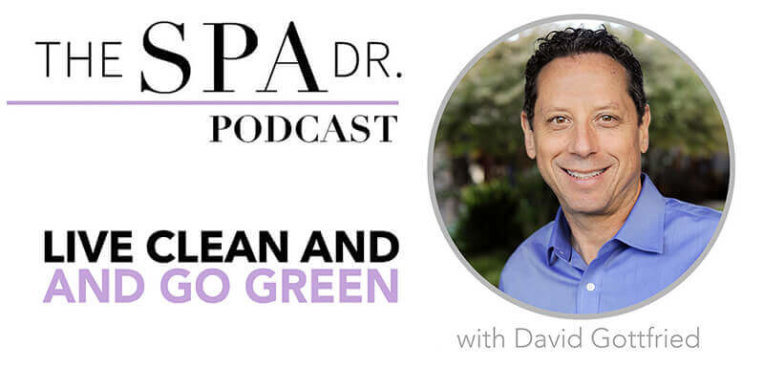
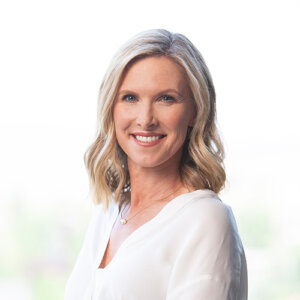
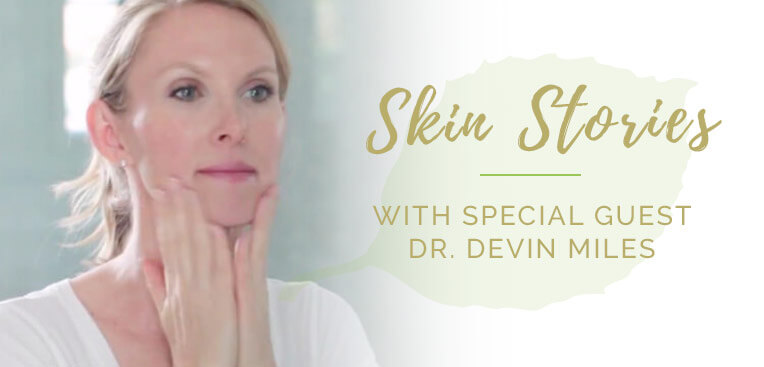
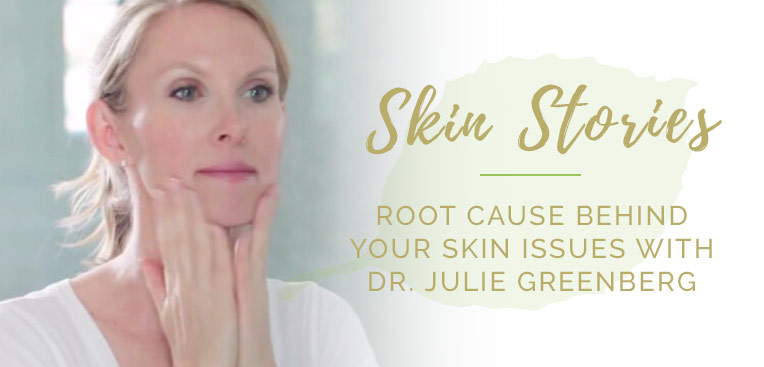


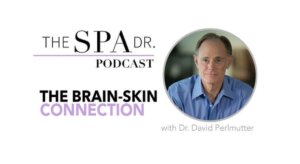

Reader Interactions